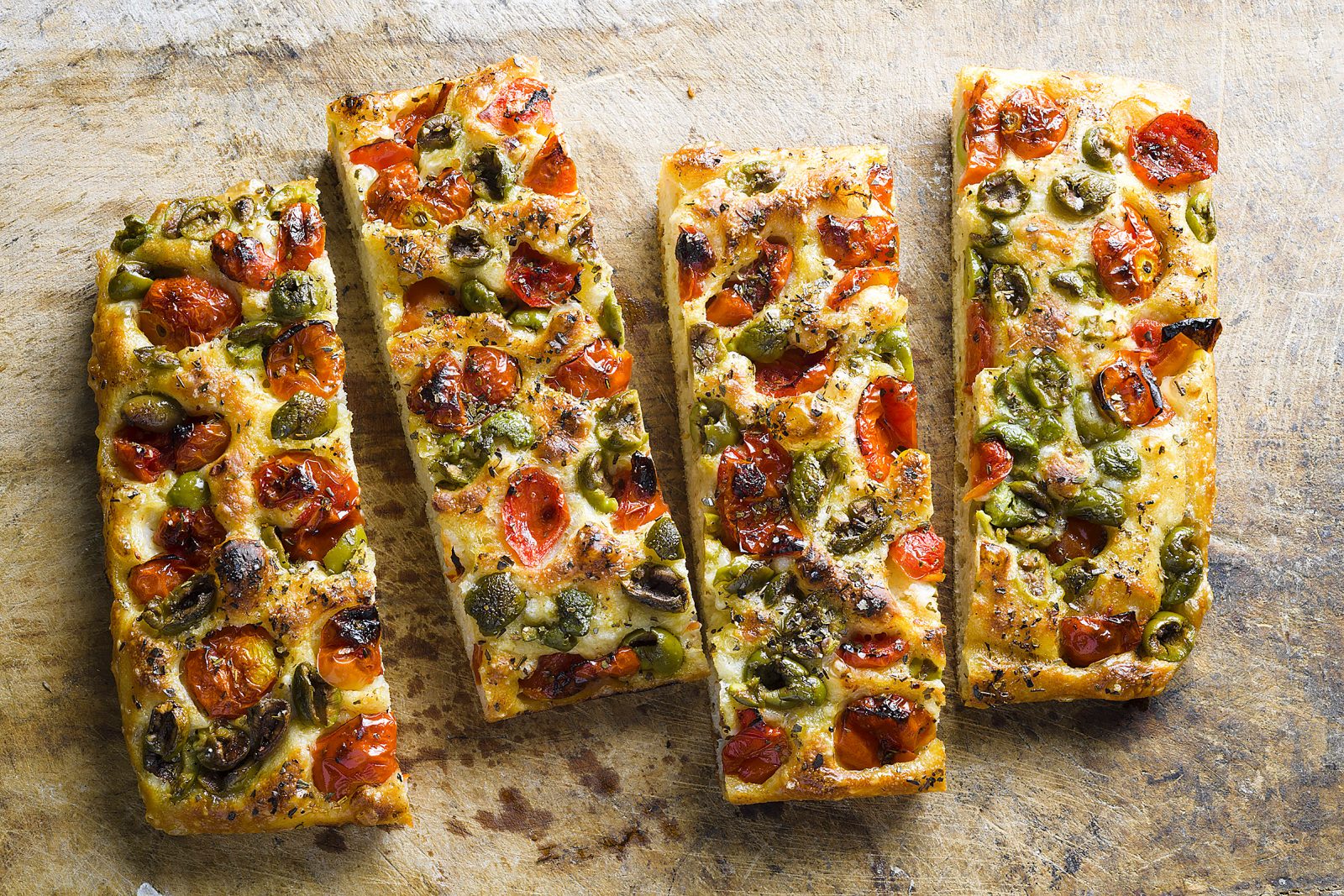Focaccia. The name alone evokes images of rustic, golden-brown bread, fragrant with herbs and glistening with olive oil. But focaccia is more than just a delicious accompaniment to meals; it’s a canvas for creativity, a testament to the simplicity and beauty of good food.
A Brief History
Focaccia has deep roots, tracing back to ancient Roman times. Evidence suggests that early versions of this flatbread were enjoyed by Roman legionnaires as a portable and nourishing food. Over the centuries, focaccia evolved, with regional variations emerging across Italy. Today, it’s a beloved staple throughout the country, each region boasting its own unique twists on this classic bread.
The Essence of Focaccia
At its core, focaccia is a simple bread. It’s typically made with flour, water, yeast, and salt, though variations often include olive oil, herbs, and other flavorings. The hallmark of good focaccia lies in its texture: crisp on the outside, thanks to a generous drizzle of olive oil and a sprinkle of coarse salt, and soft and airy within.
A Culinary Canvas
One of the most appealing aspects of focaccia is its versatility. It serves as a blank canvas for culinary creativity.
Classic Variations

Focaccia Genovese:
This iconic version from Genoa is characterized by its large dimples created by pressing fingers into the dough. It’s often topped with rosemary and coarse sea salt.
Focaccia di Recco:
This Ligurian specialty is renowned for its incredibly thin crust and generous layer of creamy stracchino cheese.
Focaccia Barese:
From the Puglia region, this focaccia is known for its thick crust and inclusion of lard in the dough, which adds richness and flavor.
Beyond the Basics
Beyond these regional classics, the possibilities for flavor combinations are endless.
Sweet and Savory
Tomato and Rosemary:
A classic pairing, ripe tomatoes and fragrant rosemary create a burst of Mediterranean flavor.
Onion and Caramelized Onions:
The sweetness of caramelized onions adds depth and complexity to this savory focaccia.
Fig and Honey:
For a touch of sweetness, figs and a drizzle of honey create a delightful combination.
Roasted Vegetable:
Incorporate roasted vegetables like zucchini, eggplant, and peppers for a vibrant and flavorful focaccia.
Cheese Lovers Rejoice
Gorgonzola and Walnuts:
The pungent blue cheese pairs beautifully with the earthy flavor of walnuts.
Mozzarella and Basil:
A simple yet elegant combination, fresh mozzarella and basil create a classic Italian flavor profile.
Provolone and Pepperoni:
For a more substantial option, add slices of provolone and pepperoni for a flavorful and satisfying focaccia.
Herbaceous Delights
Rosemary and Garlic:
A classic combination that never disappoints, rosemary and garlic infuse the focaccia with savory aromas.
Thyme and Lemon:
The bright flavors of thyme and lemon add a refreshing twist to this classic bread.
Chives and Onion:
A simple yet effective combination, chives and onion add a subtle onion flavor to the focaccia.
Tips for Focaccia Success
Making great focaccia requires a few key considerations.
Use High-Quality Flour:
Look for a high-protein flour like bread flour or all-purpose flour with a higher protein content.
Proper Hydration:
Ensure the dough has the right amount of moisture. It should be slightly tacky but not sticky.
Patience is Key:
Allow the dough to rise slowly and gently. This will develop the flavor and texture.
Don’t Overwork the Dough:
Gently fold and stretch the dough to develop gluten, but avoid overmixing, which can make the bread tough.
Embrace Imperfection:
Focaccia is meant to be rustic and imperfect. Don’t worry about achieving perfectly even dimples or a perfectly smooth surface.
Baking Techniques
Baking in a Hot Oven:
Baking the focaccia in a hot oven ensures a crispy crust.
Adding Steam:
Creating steam in the oven helps to create a beautifully airy interior.
Serving Suggestions
Focaccia is incredibly versatile and can be enjoyed in a variety of ways.
Appetizer:
Serve warm slices of focaccia topped with various toppings as an appetizer or snack.
Side Dish:
Pair focaccia with soups, salads, and stews as a delicious and satisfying side dish.
Sandwich Bread:
Use focaccia as a base for sandwiches, replacing traditional bread for a unique and flavorful experience.
Charcuterie Board:
Add slices of focaccia to a charcuterie board for a delicious and elegant touch.
Beyond the Kitchen
Focaccia extends beyond the realm of culinary enjoyment. It can be a source of inspiration for artists and a symbol of Italian culture and tradition.
Focaccia in Art
Focaccia has been a subject of artistic inspiration, capturing the attention of painters and photographers. The rustic beauty and textural qualities of this bread make it a captivating subject for visual expression.
Focaccia in Culture
Focaccia plays an important role in Italian culture, often shared among family and friends during meals and celebrations. It’s a symbol of hospitality and a connection to culinary traditions.
Conclusion
Focaccia is more than just a bread; it’s a culinary journey, a testament to the simplicity and beauty of good food. From its humble origins to its modern-day incarnations, focaccia continues to captivate and inspire. Whether you’re a seasoned baker or a culinary novice, exploring the world of focaccia is a rewarding experience. So, gather your ingredients, embrace the process, and enjoy the delicious results of your culinary creations.